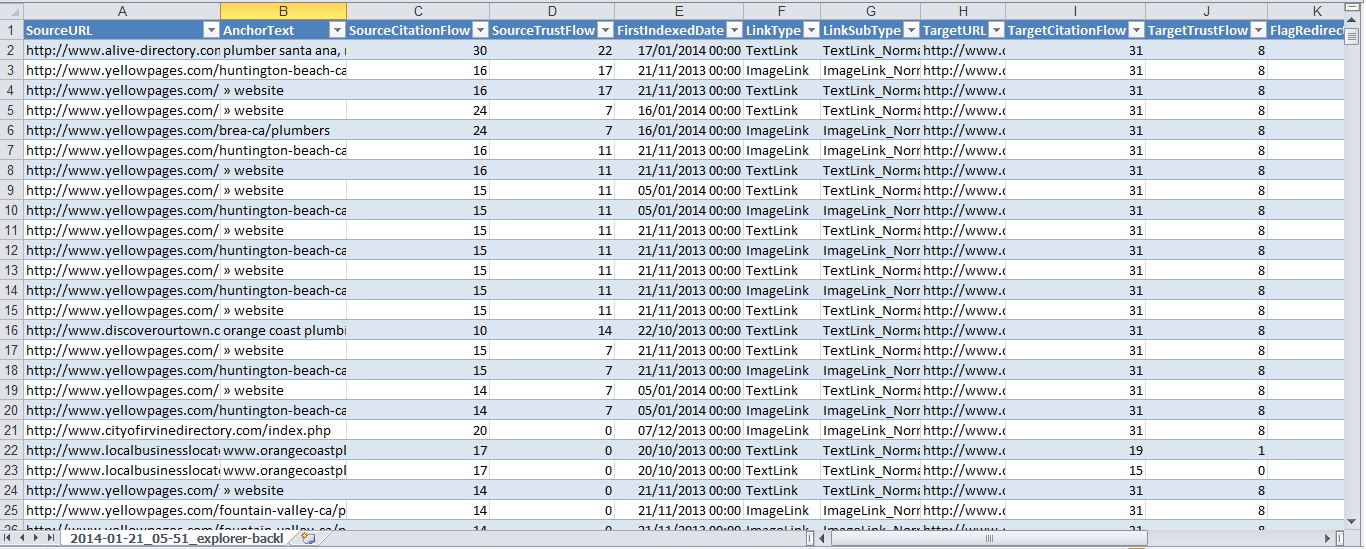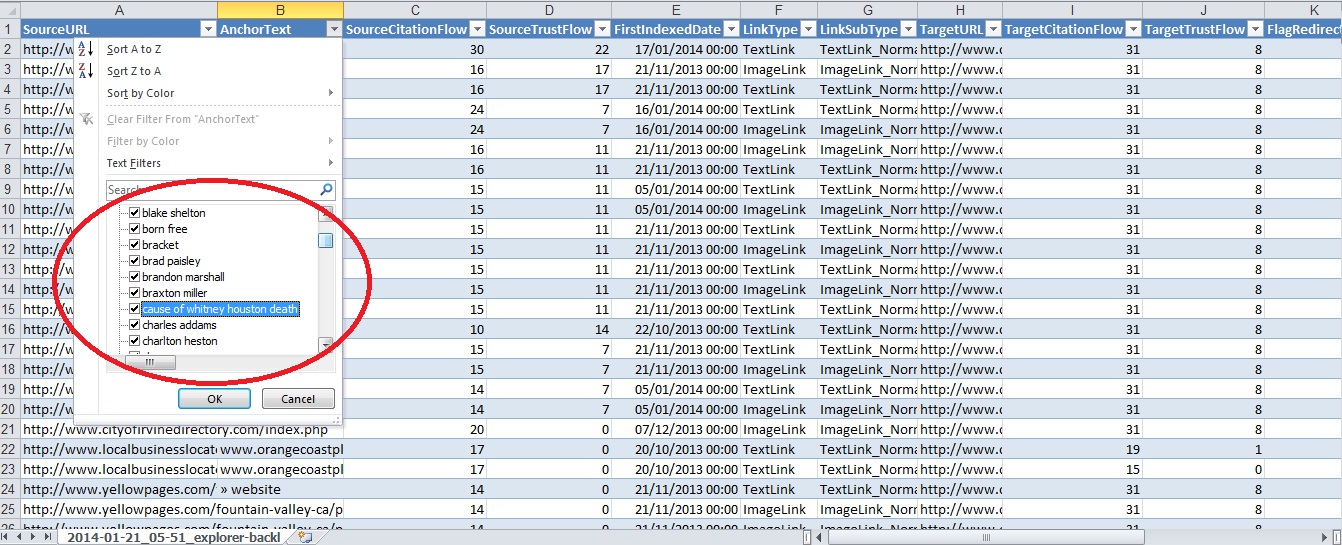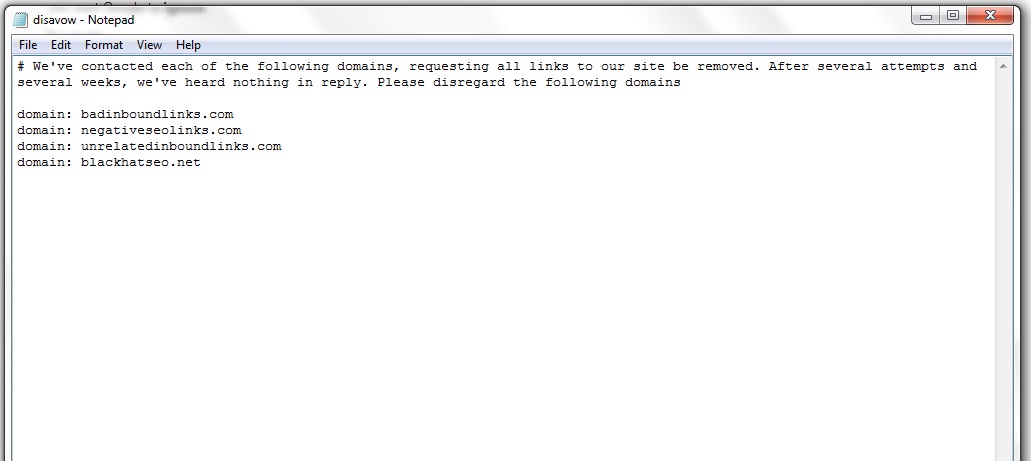
Posted by
Levi Lewis
Matt Cutts dropped another bombshell
into the world of SEO recently. It was meant to be a warning to people who
do poor/spammy SEO link building (this time via guest blog posting), but as
we’ll discuss here, this recent announcement combined with the Penguin updates
in the last year or so has much broader implications for the SEO world.
Matt Cutts’ announced that Google is considering a great
deal of guest blog posting to be spammy, and therefore possibly a target for
future Penguin updates. This is just another example of how Google has declared
war on old-school SEO tactics. Unfortunately, as with all wars, this means a
lot of innocent civilians will get caught in the cross-fire.
The purpose of this blog post is to first, give you some
history behind Google’s updates and secondly, to show you that even the
innocent have to change their SEO tactics in order to avoid becoming a casualty
of war. Also, I’ll walk you through an easy step by step process on what your
defense should look like and how it can protect you.
April 24th2012: First Shots Fired
Historians and war buffs **** to ruminate on the first shot
fired in any conflict. These first shots are pivotal moments that oftentimes
mark a cascading chain reaction that quickly spills over into official
declarations of war. As such, they are
powerful moments when everything changed – a sort of point of no return.
On April 24th 2012, Google fired one of these game
changing shots when it announced its first Penguin update. It’s important to
understand that Google had previously sought to penalize websites that they
believed to be thin, spammy, or of little value. However, the shot fired on
April 24th 2012 had a unique flavor to it. Rather than focus on the
content of the website in question, Google now sought to penalize a website for
what it believed to be spammy in-bound link campaigns. This, quite simply put,
meant that if Google saw a lot of poor links pointing to your site, they might
assume that you had been paying for links and ding you in their rankings as a
result. This assumption was not without ominous consequences for the innocent.
Penguin Updates and
the Emergence of Guerilla Warfare:
Knowing that Google will ding you for poor links, Black Hat
SEO firms can get you in Google’s crosshairs by making it appear that you are creating
spammy links that point to your website. The fact that either you or a
competitor of yours can create poor links to your site creates a guerilla
warfare problem for Google. How do they know if you are paying for poor quality
inbound links or if another firm is creating them to take you down? Just like
in modern warfare, where the enemy fights in the streets in civilian clothes,
it’s difficult to differentiate the enemy from a pedestrian, and as a result, a
lot of innocent civilians (read: websites) get shot.
A Field Guide for
Survival in a Post-Penguin World
With the history lesson out of the way, let’s hit the meat
of this post – how everyone’s SEO has to change, even the good guys who only do
White Hat SEO. You see, some people believe that if they haven’t been
participating in or paying for links to their site, they should be fine. No
harm, no foul, right? Well, based on the ground we’ve just covered, it had
better be obvious that this thinking is naive, out of ****, and flat out wrong.
Here’s the bottom line: if you haven’t incorporated defensive measures into your
regular SEO tasks, you’re a sitting duck.
Spotting the Enemy
Recognizing the enemy is step number one. Every month, you
should have time set aside to spot negative SEO attacks. Fortunately, most are
not hard to spot, if you know what to look for, and any company out there that
is looking to harm your website’s rankings should stick out like a sore thumb. Taking
a look at the links pointing to your site, keep a sharp eye out for any of the
following:
- A high number of followed
links from very low quality websites - Links to your website from
link networks (identifiable by the sheer quantity of links on any given page
and the spammy appearance of the page/website) - Irrelevant anchor text that
points to your site from irrelevant sites - Inappropriate anchor text from
inappropriate domains - Etc. (for a more fleshed
out list, refer to the section below on Link Detox)
Where can you find these shady links? Google Webmaster tools
would seem like a good place to start, but keep in mind that Google Webmaster
Tools’ list of inbound links to your site is just a sampling of inbound links.
Look to services like Majestic SEO or Moz’s Open Site Explorer for a more
exhaustive list of links. These services usually have a much more extensive
list that can be orders of magnitude greater that what Google Webmaster Tools
shows. (And if you think that Google will show the important ones, so Webmaster
Tools is good enough, you can forget it; many people have reported cleaning up
all the bad links found in Webmaster Tools only to find that Google was
penalizing them for links that Google itself wasn’t listing in WMT).
Your list (tabled in Excel) will look something like this
(pulled from a plumbing website that belongs to a client of mine):
Backlinks

Notice that Majestic SEO, which I’ve used here, lists the
source of the link (column A), the anchor text (column B), and other useful
information, such as when the link was first found, the trust (authority) of
the website that is sending the link, etc.
At first blush, everything appears to be okay. However,
simply checking a few items throws up a red flag. Let’s use the sort feature of
the Excel table to take a look at the variety of anchor text leading to my
client’s site:

Keep in mind that this particular client is a plumber on the
west coast. Having said that, why in the world do they have links pointing to
them that use anchor text like “born free” “brad paisley” or “cause of whitney
houston death?” And this is barely scraping the surface. I have another client
who has links pointing to their website that reference black market items, like
knock-off Ugg boots, prescription *****, and even ***** industry products or
related searches.
The irrelevance/inappropriateness of the anchor text is your
first and biggest clue. A quick visit to the source URL should reveal what is
obviously a link farm created for negative SEO purposes.
Targeting the Enemy
Once you’ve spotted the negative SEO, it’s time to weed out
the wheat from the tares. Running a manual audit based on anchor text is a good
way to start. Keep track of any domains that are linking to your site with
irrelevant/inappropriate anchor text. Then, for a more thorough and technical
inbound link audit, use a service like Link Detox, which will run a report that
will help you evaluate the toxicity of links pointing to your website. Link
Detox evaluates links on a number of different criteria, even getting as
granular as looking at the C-block of incoming links, registrant names, and
other not-so-easy-to-tell-at-first-glance items. A note of caution, however -
I’ve used Link Detox, and I’ve found that it sometimes flags relevant links
from high PR sites, so don’t take everything at face value; check out the links
yourself after the report has been run.
Pulling the Trigger
Once you have your list of domains, Google recommends that
you reach out to the webmaster of these domains and ask them to take down the
links pointing to your site. Let’s have a brief moment of honesty here. If
someone is targeting your website with negative SEO, chances are that the
webmaster is going to completely ignore your request. Furthermore, chances are
that they are using a hosting service that is overseas and couldn’t care less
about your predicament and therefore won’t take any action either. That’s just
how Black Hat SEOs do things. However, Google does ask that you take this step
and notate it, so contact them it is. Once you’ve contacted them, compile a
Disavow list based on the domains you’d like to disavow. I won’t go into minutia
on this, as there are plenty of other posts out there that detail how disavow
lists are to be created and submitted, but suffice it to say that it will look
something like the following, will be saved in a txt format, and will be
submitted through Google’s Disavow Tool.

Constant Vigilance to Win the Battle
It may not sound like what you want to hear, but I’m not
here to deliver good news in time of war. Until Google undoes the situation
they’ve created by penalizing spammy inbound links rather than simply ignoring
them, you’re going to have to make defensive SEO a part of your daily walk. The
silver lining is that once you’ve spotted the negative SEO, a domain based
disavow list can help you force your unscrupulous competitor to waste their
money by spinning their wheels. By disavowing an entire domain, additional
links that are built to your site from these domains will be ignored by Google.
Furthermore, because no one can see the disavow list you’ve submitted (or even
if you’ve submitted one at all), many Black Hat SEO firms won’t know that each
link they build that isn’t from a completely new domain (meaning they haven’t
used it to link to you before) is a complete waste of their time, because unbeknownst
to them, you’ve already disavowed it.
Conclusion
Hopefully you’re feeling more informed on how Google has
brought about the re-vitalization of negative SEO, how your SEO needs to adapt
in order to combat it, and exactly what that combat plan looks like. Just like
any war, things aren’t settled over *****. Buckle down for the long-haul, and
you’ll be just fine.
This article was co-authored by Jake Mabey & Levi Lewis




